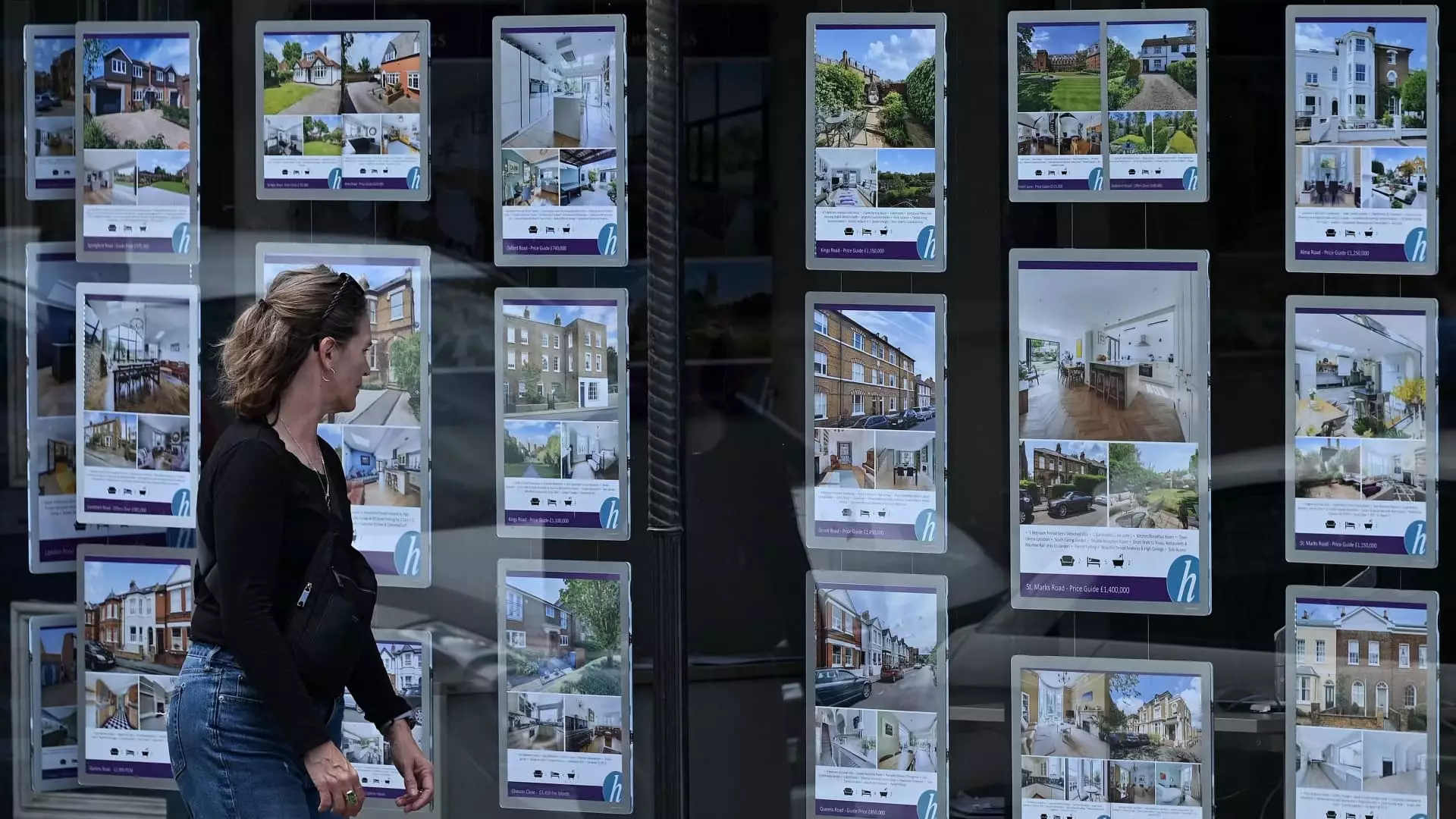The U.K. housing market is experiencing a noteworthy revival, fueled by a significant decrease in mortgage rates. Recent data reveals a staggering 25% increase year-on-year in agreed home sales over four weeks leading to September 22, marking a surge in activity that mirrors levels not seen since the spring of 2021. This trend is indicative of households that have delayed their moving decisions due to the uncertainties stemming from the past two years finally returning to the market. According to Zoopla, a prominent property portal, this renewal of buyer interest is an essential signal that consumers are regaining confidence in their ability to navigate the turbulent property landscape.
The decline in mortgage rates has played a critical role in this rejuvenation. Current average mortgage rates for five-year fixed terms stand at approximately 4.57%, down from 5.53% during the same period last year. This decrease is not merely incidental; it reflects a broader trend initiated by the Bank of England’s decision to cut interest rates for the first time in over four years. Furthermore, signs of pent-up demand are emerging, as mortgage inquiries surged by 26% annually, suggesting that many potential buyers are reconsidering their positions in light of more favorable borrowing conditions.
The direct effect of these lower rates has been a boost in confidence among homeowners. Richard Donnell, the executive director at Zoopla, articulates this sentiment, indicating that many have hesitated to make moving decisions until now. The implications of such confidence can be profound, potentially leading to a self-reinforcing cycle of increased market activity as individuals and families feel empowered to invest in property once again.
Analyzing the landscape further reveals intriguing regional disparities. Nationwide’s data indicates that house price growth is most pronounced in Northern Ireland, achieving an impressive 8.6% year-on-year increase, followed closely by Scotland at 4.3%. This suggests that certain regions are experiencing localized booms, driven by factors unique to their economies or housing stock. In contrast, the performance of London, while still noteworthy, represented a more tempered increase of 2%. As cities continue to evolve following the pandemic, the “race for space” phenomenon is apparent, albeit with a notable lag in apartment sales.
Moreover, the historical patterns of southern regions trailing their northern counterparts in terms of price appreciations appear to be changing, hinting at a potential recalibration of where value and desirability lie within the U.K. housing market.
Future Outlook: Potential Tax Implications and Policy Changes
As the housing market shows signs of increased activity, speculation surrounding future tax changes looms on the horizon, threatening to shape market dynamics even further. Finance Minister Rachel Reeves has hinted at necessary tax hikes to address the substantial £22 billion ($29 billion) “black hole” in public finances – a move that could reverberate throughout the real estate sector. Although essential increases in personal income tax or sales levies have been ruled out, adjustments to capital gains tax and inheritance taxes remain under consideration, both of which could significantly affect property transactions.
Additionally, anticipated shifts in non-dom tax status could stimulate activity among high-value property sellers, further complicating the landscape. Such changes might drive seller behaviors among affluent individuals contemplating relocation to tax-friendlier jurisdictions.
The U.K. housing market stands on a precipice of change – driven by lower mortgage rates and a comeback in buyer confidence. Although the immediate response has been favorable, underlying issues such as potential tax hikes and the availability of properties could temper long-term price growth, keeping the market firmly in a buyer’s domain for the foreseeable future. Individuals contemplating entering this revitalized market should remain acutely aware of these developments, balancing the current enthusiasm against the challenges and uncertainties that lie ahead. As the landscape shifts, buyers must navigate with a strategy rooted in awareness and adaptability, ensuring they are well-positioned to seize opportunities that arise amid this evolving scenario.

